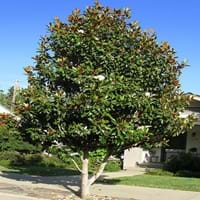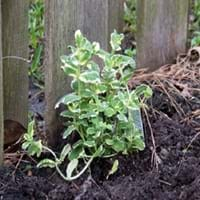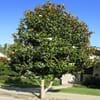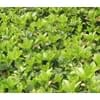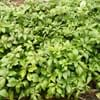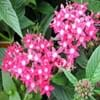Life Span
Perennial
Perennial
Type
Broadleaf Evergreen
Herbs
Origin
Southeastern United States
Southern Europe
Types
Not available
Not Available
Number of Varieties
Not Available
Habitat
marshes, Marshy ground, Swamps
Cultivated Beds, Dappled Shade, Shady Edge, Sunny Edge, Woodland Garden
USDA Hardiness Zone
6-10
6-9
AHS Heat Zone
Not Available
9-5
Sunset Zone
21,22
4, 5, 6, 7, 8, 9, 10, 11, 12, 13, 14, 16, 17, 18, 19, 20, 21, 22, 23, 24
Habit
Pyramidal
Spreading
Minimum Width
Not Available
Flower Color
White
White, Pink
Flower Color Modifier
Bicolor
Bicolor
Leaf Color in Spring
Dark Green
White, Light Green
Leaf Color in Summer
Dark Green
White, Light Green
Leaf Color in Fall
Dark Green
White, Light Green
Leaf Color in Winter
Dark Green
Light Green
Leaf Shape
Pyramidal
Oval
Plant Season
Spring, Summer, Fall, Winter
Spring, Summer, Fall
Sunlight
Full Sun, Partial Sun
Partial Sun, Partial shade
Type of Soil
Clay, Loam, Sand
Clay, Loam, Sand
The pH of Soil
Acidic, Neutral
Acidic, Neutral
Soil Drainage
Well drained
Poorly Drained
Bloom Time
Early Spring, Spring, Late Spring, Early Summer, Summer, Late Summer
Summer
Tolerances
Pollution, Drought
Drought
Where to Plant?
Ground, Pot
Container, Ground, Pot
How to Plant?
Layering, Semi-ripe cuttings, Softwood cuttings
By dividing rhizomes, tubers, Stem Cutting
Plant Maintenance
Low
Medium
Watering Requirements
Provide sufficient water to saturate the root zone, Requires regular watering, Water when soil is dry
Average Water Needs, Do Not over Water, Requires regular watering
In Summer
Less Watering
Lots of watering
In Spring
Drought Tolerant
Moderate
In Winter
Average Water
Average Water
Soil pH
Acidic, Neutral
Acidic, Neutral
Soil Type
Clay, Loam, Sand
Clay, Loam, Sand
Soil Drainage Capacity
Well drained
Poorly Drained
Sun Exposure
Full Sun, Partial Sun
Partial Sun, Partial shade
Pruning
Remove damaged leaves, Remove dead branches, Remove dead leaves
Prune in the growing season, Remove damaged leaves, Remove dead branches, Remove dead leaves
Fertilizers
All-Purpose Liquid Fertilizer
All-Purpose Liquid Fertilizer, Fertilize in early spring
Pests and Diseases
Birds, Squirrels
Red blotch
Plant Tolerance
Drought
Drought
Flower Petal Number
Single
Single
Fragrant Bark/Stem
No
Yes
Foliage Texture
Coarse
Medium
Foliage Sheen
Glossy
Matte
Attracts
Birds, Rabbits, Squirrels
Bees, Butterflies, pollinators
Allergy
allergic reaction, Asthma, Runny nose
Itchiness, Skin rash, Stomach pain, Swelling
Aesthetic Uses
Beautification, Cottage Garden, Landscape Designing, Showy Purposes
Bonsai, Showy Purposes
Beauty Benefits
Anti-ageing, Beautiful Skin, Blood purifying, Treatment of Dark Spots
Good for skin
Environmental Uses
Air purification
Air purification
Medicinal Uses
Alzheimer’s Disease, anti-cancer, Anxiety, Asthma, Diabetes, Liver problems, Menstrual Cramps
Antiseptic, Digestive disorders, Fever, Headache
Part of Plant Used
Flowers
Fruits, Leaves
Other Uses
Air freshner, Grown for shade
Added to salads, Used as essential oil, Used in making tea, Used to make herbal teas
Used As Indoor Plant
Yes
Yes
Used As Outdoor Plant
Yes
Yes
Garden Design
Container, Feature Plant, Landscape, Shade Trees, Street Trees
Bog Garden, Edible, Groundcover, Herb / Vegetable
Botanical Name
MAGNOLIA grandiflora
MENTHA suaveolens 'Variegata'
Common Name
Magnolia grandiflora, bull bay
Applemint, Variegated Applemint
In Hindi
Magnolia grandiflora
Applemint Tree
In German
Immergrüne Magnolie
Applemint Baum
In French
Magnolia à grandes fleurs
Applemint Arbre
In Spanish
Magnolia grandiflora
Árbol Applemint
In Greek
Magnolia grandiflora
Applemint Δέντρο
In Portuguese
Magnólia-branca
Árvore applemint
In Polish
Magnolia wielkokwiatowa
Applemint Drzewo
In Latin
Magnolia grandiflora
Applemint ligno
Phylum
Magnoliophyta
Magnoliophyta
Class
Magnoliopsida
Magnoliopsida
Order
Magnoliales
Lamiales
Family
Magnoliaceae
Lamiaceae
Clade
Angiosperms, Magnoliids
Angiosperms, Asterids, Eudicots
Tribe
Not Available
Mentheae
Subfamily
Magnolioideae
Faboideae
Number of Species
Not Available
Importance of Southern Magnolia and Applemint
Want to have the most appropriate plant for your garden? You might want to know the importance of Southern Magnolia and Applemint. Basically, these two plants vary in many aspects. Compare Southern Magnolia and Applemint as they differ in many characteristics such as their life, care, benefits, facts, etc. Every gardener must at least have the slightest clue about the plants he wants to plant in his garden. Compare their benefits, which differ in many ways like facts and uses. The medicinal use of Southern Magnolia is Alzheimer’s Disease, anti-cancer, Anxiety, Asthma, Diabetes, Liver problems and Menstrual Cramps whereas of Applemint is Antiseptic, Digestive disorders, Fever and Headache. Southern Magnolia has beauty benefits as follows: Anti-ageing, Beautiful Skin, Blood purifying and Treatment of Dark Spots while Applemint has beauty benefits as follows: Anti-ageing, Beautiful Skin, Blood purifying and Treatment of Dark Spots.
Compare Facts of Southern Magnolia vs Applemint
How to choose the best garden plant for your garden depending upon its facts? Here garden plant comparison will help you to solve this query. Compare the facts of Southern Magnolia vs Applemint and know which one to choose. As garden plants have benefits and other uses, allergy is also a major drawback of plants for some people. Allergic reactions of Southern Magnolia are allergic reaction, Asthma and Runny nose whereas of Applemint have Itchiness, Skin rash, Stomach pain and Swelling respectively. Having a fruit bearing plant in your garden can be a plus point of your garden. Southern Magnolia has showy fruits and Applemint has no showy fruits. Also Southern Magnolia is not flowering and Applemint is flowering. You can compare Southern Magnolia and Applemint facts and facts of other plants too.
